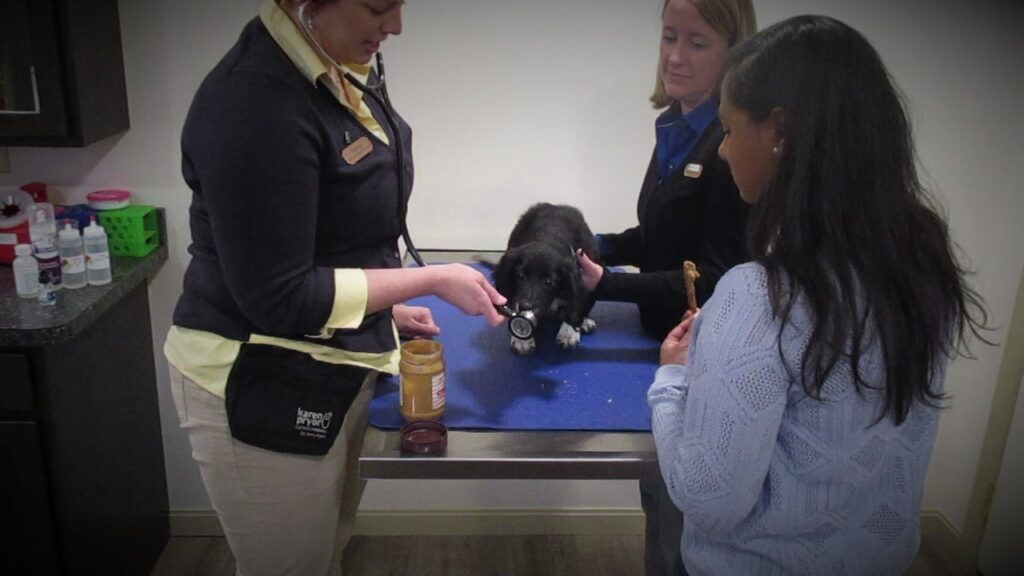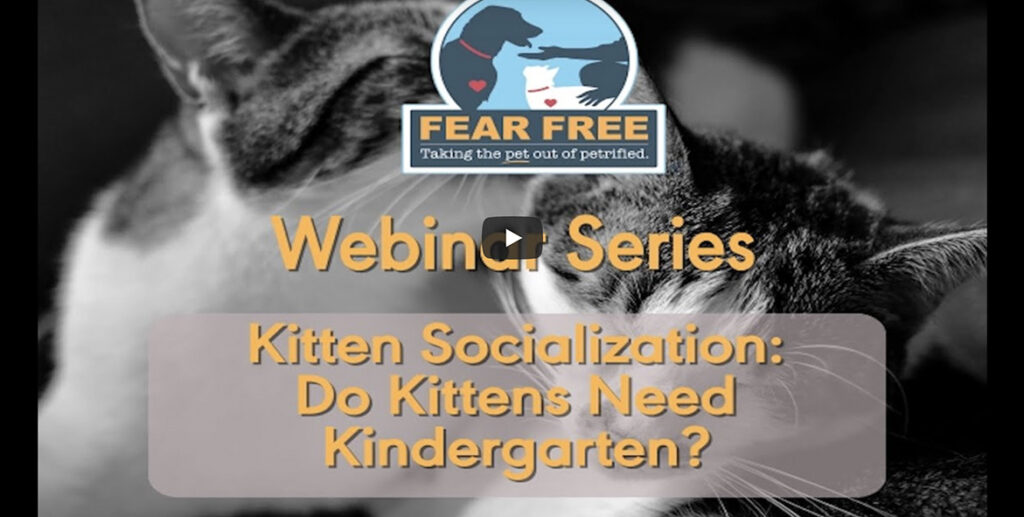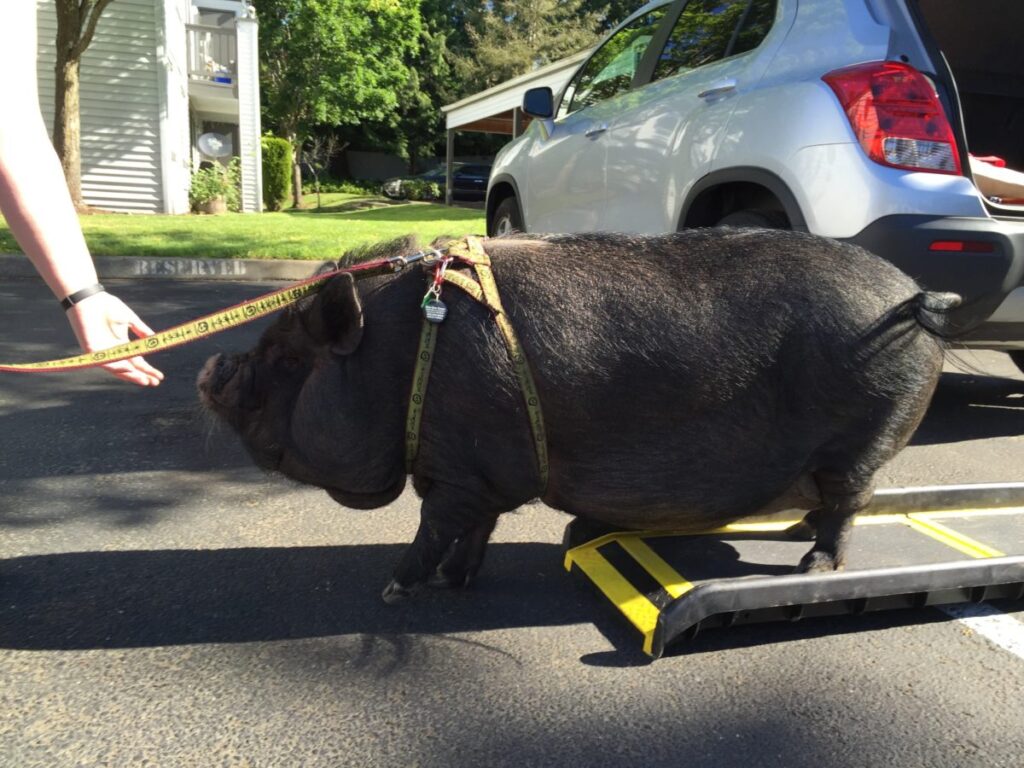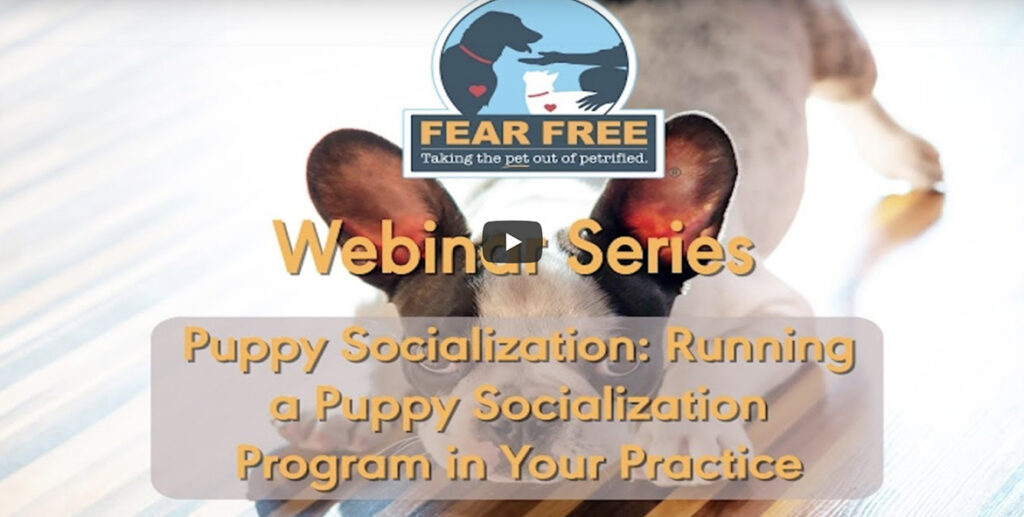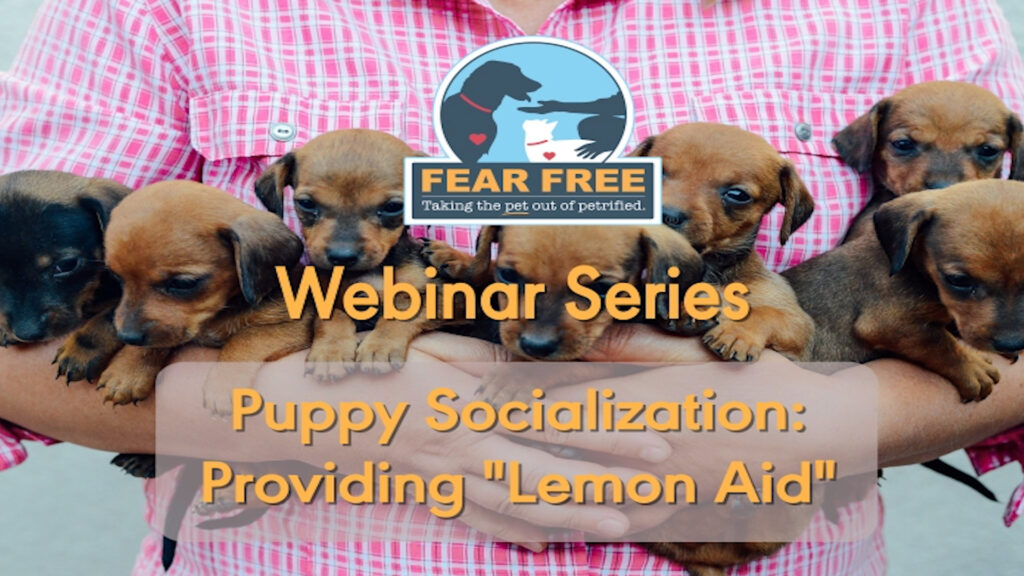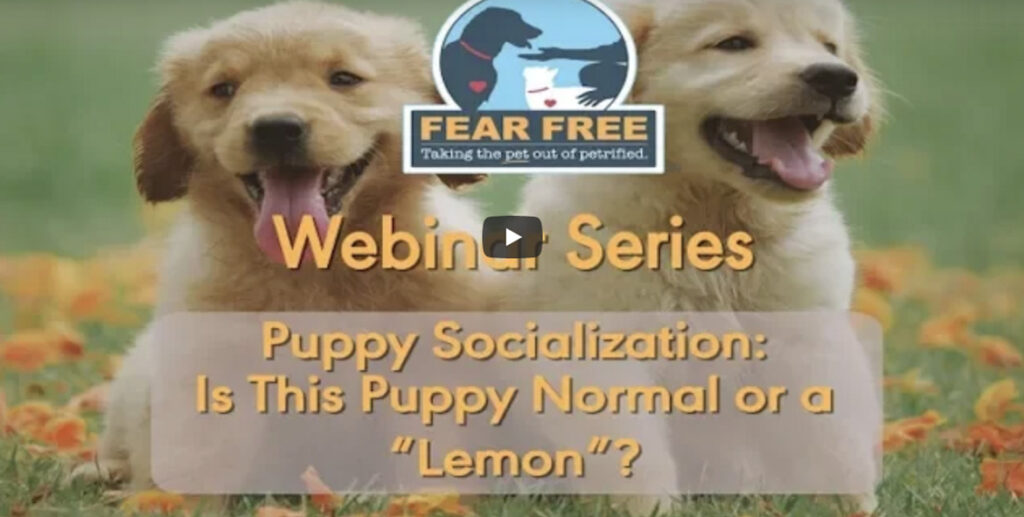Mikkel Becker
The fear of visiting the veterinarian and the anxiety of riding in the car isn’t limited to dogs or cats. Other animals experience these anxieties as well, including pigs. I know, because I was part of a major effort to help one adorably sweet and sizably grand pet pig, Dee Dee, to overcome her fear of car trips and veterinary visits.
Dee Dee’s fears were anything but mild when I met her. At one time she enjoyed riding in the car and veterinary care was a non-issue. But that changed after a spay surgery with a previous veterinarian when she was received third-degree burns from a heating pad during the procedure. The extreme pain and distress of the experience changed her behavior any time she rode in the car or was taken to the veterinary clinic. Any indication that she was going to be placed in the car sent all 250 pounds of Dee Dee into a flailing, fighting fury to flee to safety. She seemingly paired the car ride and traveling to new places with the distress and pain of the one experience.
From Chaos to Calm
Just getting Dee Dee into the car involved recruiting neighbors and the strength of many large men to push, pull, and pick her up into the car while other people blocked her movements and view using cardboard boxes. Dee Dee squealed in panic the entire trip and in her distress peeing and pooping all over the inside of the SUV in which she rode.
By the time I met Dee Dee, not only was she in distress, so was her owner, Olive. She was overwhelmed by the impossibility of getting her pig the care she needed, including hoof trims, a long overdue necessity. Olive was trapped between the duty of caring for her pig’s health and the guilt of not wanting to put Dee Dee through any more terror to get the care she needed. Thankfully, with the right Fear Free partnerships and training, Dee Dee was able to get the physical care she needed without losing her emotional wellbeing in the process.
As a trainer who is Fear Free certified, I was able to incorporate aspects of reward-based training that I commonly use with dogs into my training with Dee Dee. In addition to training, an essential step was to find a Fear Free-certified exotic animal veterinarian. We came across Dr. Alicia McLaughlin from the Center for Bird and Exotic Animal Medicine near Seattle, Washington, who was equally committed to reducing Dee Dee’s fear, anxiety, and stress.
We taught Dee Dee to touch and follow a target, in her case a plastic serving spoon. This became her go-to way to say hi to new people. Targeting was also an excellent way to encourage her to willingly follow toward, away, onto, or off certain spaces to better guide her movements. This was useful both for getting her to willingly approach the car and walk up the ramp, as well as to move onto spaces such as the scale or into the exam room.
Dee Dee also had an impressive array of other fun tricks we capitalized on as relationship builders for her care, including sit, down, and Zen down, during which she would lie on her side. Such behaviors were vital to earn her participation during care, for keeping her in a stationary position, and for getting a better view of her hooves and belly.
Training for Travel
To get Dee Dee ready, an essential step was to replace her car ramp with a far sturdier version. Dee Dee was petrified of her previous ramp and avoided it at all costs. This time we took ramp training slowly by introducing it on a flat surface and teaching her to walk across it following a treat trail and her target spoon.
After successful ramp crossings on the flat surface, she graduated to higher spaces, including the curb and couch. Dee Dee liked this training so much she often opted to walk across the ramp and lie down atop it in her free time.
Separately, we desensitized Dee Dee to being around the car, including opening car doors or turning on the car while she did tricks, without actually getting in or going anywhere. We incorporated “go to your space” by training her to move to her blanket, which was useful as a portable safe space during trips in the car and at the vet.
In preparation for the visit to the hospital, Dr. McLaughlin prescribed pre-visit medications to help keep Dee Dee calm and reduce her panic.
Edible and Physical Treats
For training treats, we chose small, healthy snacks, including measured portions of her regular food, a cut-up apple or banana, and Cheerios. Our go-to treats were veggies cut into bite-size bits, including red, green, and yellow peppers, and her favorite, cherry tomatoes (reserved for the most challenging behaviors). Dee Dee’s previously expanding waistline began to shrink.
Dee Dee also liked back scratches and “getting forked”: a massage-like action with gentle poking of a fork that sent her into a euphoric trance. We used this to encourage her to relax as well as a reinforcer for performing certain behaviors. In getting Dee Dee up the ramp and into the car on the actual day of her veterinary trip, a human to scratch her back helped to keep her settled.
Challenging Setback
Unfortunately, our gradual acclimation timeline was thrown off because of a hoof injury that required veterinary care sooner than we had planned in our training timeline. We had to adapt the foundation we did have to help Dee Dee into the car, despite not having the full timeframe to practice with the ramp. This big jump was undeniably going to be too much for Dee Dee, so we coupled our training efforts with Dr. McLaughlin to provide pre-visit sedation that would keep her calm while still alert and mobile.
The first attempt at sedation wasn’t enough to take off the edge. Rather than forcing the issue, we settled on stopping with her moving partway up the ramp for treats and then taking a break when we noticed that past that point she was showing increased signs of FAS. The dose was adjusted, as was the angle of the ramp, so that it had a more gradual incline. Dee Dee then loaded calmly and was on her way, this time with less distress and visibly less mess.
Dee Dee’s list of known tricks was used when she arrived at the vet to increase her familiarity and cooperation with the staff and to pair the positives of trick training alongside care. The team also created a relaxed ambiance by dimming the lights and playing calming classical music. Then, by giving her pre-sedation medication of oral Valium hidden within food treats, she became sleepy and calm to the point that a sedation mask was easily placed over her nose. The care for Dee Dee’s hooves was then able to be performed without fear, anxiety, and stress being associated with the experience.
Continuing Education
After her visit, Dee Dee’s instruction continued, along with desensitization to hoof care at home. She has also learned to give in to pressure rather than to fight against it to help both with her walks and with tolerating minor restraint or guidance. Dee Dee has also been working on informational cues that teach her to turn when asked, even learning to differentiate left from right turns when asked; yet another sign of the brilliance of pigs.
The future for Dee Dee is full of hope with the help she was provided through Fear Free care. Despite a less than ideal start, she’s on track to become the healthiest and happiest pig she can be.
This article was reviewed/edited by board-certified veterinary behaviorist Dr. Kenneth Martin and/or veterinary technician specialist in behavior Debbie Martin, LVT.
Mikkel Becker, CBCC-KA, CPDT-KA, KPA CTP, CDBC, CTC, is lead animal trainer for Fear Free Pets. She is a certified behavior consultant and trainer who specializes in reward-based training that’s partnered closely with the pet’s veterinary team. Mikkel is coauthor of six books, including From Fearful to Fear Free.


